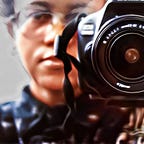The Cutting Edge
The question asked by Wendy Apple’s Cutting Edge: The Magic of Movie Editing film is, what do editors do?
“ The invisible art”, editors are responsible for the violent act of ripping a moment from its original place, and repairing it by giving it a new home, a new neighbourhood, and an exactness of being that keeps it in place ready to play its role in the making of the symphony. The result is a new world, one that draws you in through its nuanced rhythms, designed to lure you, hold you, then have you firmly in its grip, enthralled. Whether trembling in terror or whimsical in love. All this the editor does.
In the film director Steven Spielberg speaks of how he wanted lengthy shots of the shark in Jaws and was advised by editor for the film, Verna Fields, that less is more in this regard. It was arduous during production to make that shark look real and frightening. However the shark only looked real within a certain amount of frames and not more. The specificity of where one cuts is the difference between the shark in Jaws inducing panic, to it looking ridiculous and clumsy. Fields is the sounding board that Spielberg moves through as decisions are made for the final cut.
Quentin Tarantino talks about how the initial date in Pulp Fiction between Thurman and Travolta’s characters was as long as a date in real time. Editor Sally Menke convinces him that he could still give the scene his desired tone and style without having to take so much time. For a film to hit the right notes almost intuitively, a highly trusting and creative collaboration between director and editor is crucial. Through their problem solving, iconic cinematic moments are born.
Apple’s film also moves through the history of cinema to reveal the arrival of the innovation of editing. Evolving the moving image from data capturer to storyteller. A classical film that lives the parallel life of being considered both highly racist, and at once a feat in cinematic ingenuity, Birth of a Nation is too discussed. With Edwin. S Porter and D.W Griffith’s visual experiments, the film language we know and use today takes shape.
The differing eras and differing styles that would emerge to enrich the nature of how one puts a film together are covered here. The processes of manipulation available to this art to influence and indoctrinate is also fascinating to explore.
“What makes a movie a movie, is the editing” Zach Staenberg (editor for The Matrix Trilogy).
Insightful and necessary filmmaking perspective to offer.
